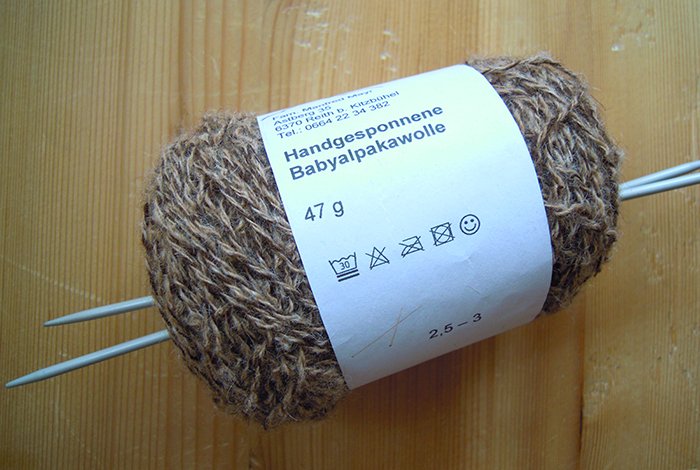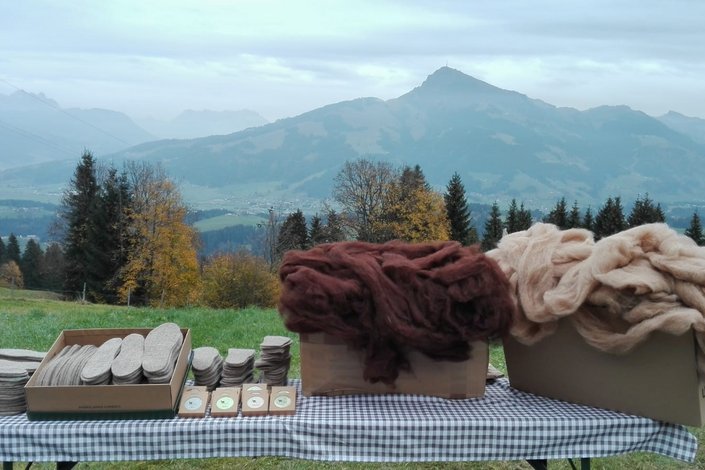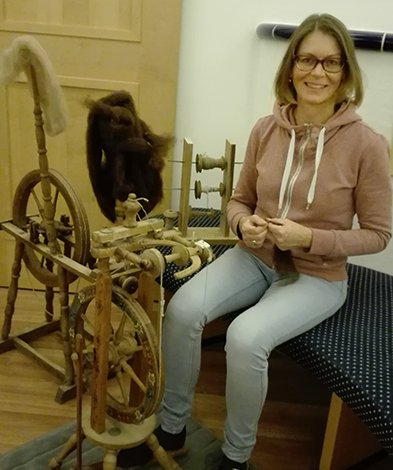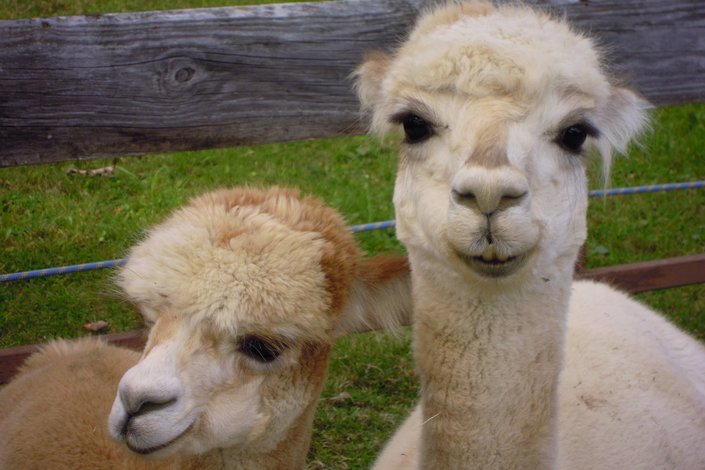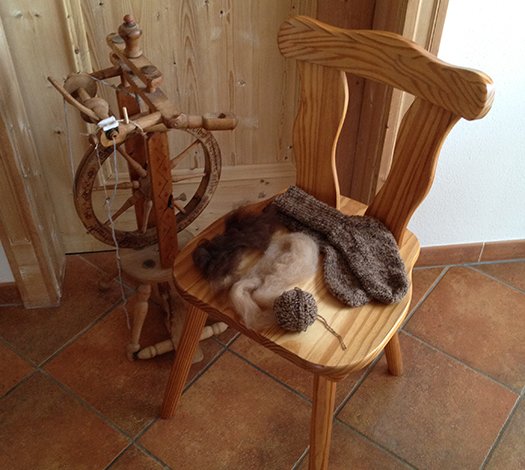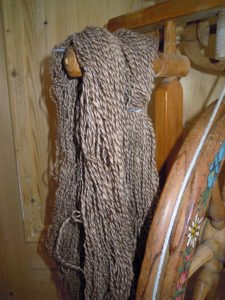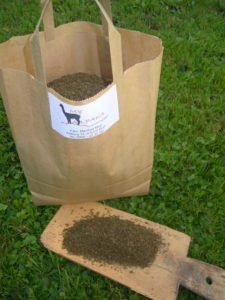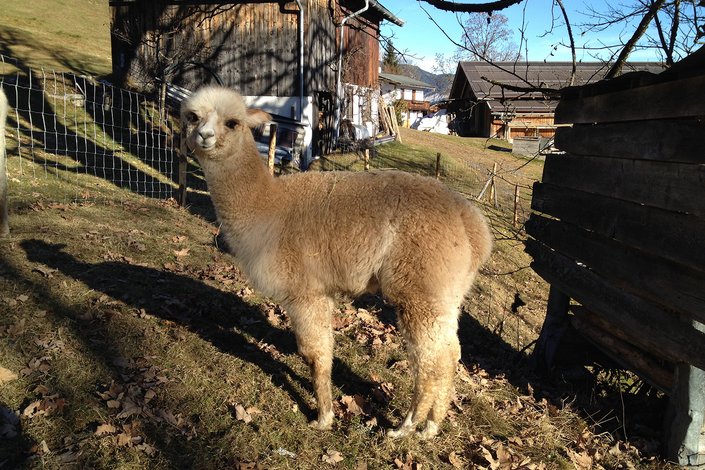Alpacas at the mountain farm "Reichwand"
The Mayr family are proud owners of a mountain farm and took in five alpacas in 2016. These are three mares and two young stallions. The family reveals the reason for the purchase of alpacas in the following.
Many advantages speak for alpacas
The barn could be used without major changes, enough pasture and exercise area was available. Alpacas are adaptable and relatively uncomplicated in keeping. In addition, they hardly cause any tread damage due to their low weight. Another advantage for the mountain farm "Reichwand". The hay is produced by the farm itself, so the keeping costs are manageable. Alpacas are very clean animals, they set up their own excrement places. Which means less work for Manfred, as a part-time farmer. The alpacas' high-quality wool is another incentive to keep them. Martina Mayr takes care of this with pleasure. We wanted to find out more about this and asked in more detail.
Alpaca wool to cuddle
Manfred's alpacas are sheared at the end of May. Martina, his wife, sorts the wool into three categories. The most beautiful wool is from the back and neck of the animals. This is processed into knitting wool. The second category of wool is from the rest of the rump. Manfred has this wool sewn into quilts. And the third category comes from the legs. Warming shoe insoles are made from it. Sounds very cozy already.
From raw wool to knitting wool
All three types of wool must be washed by hand and air dried. Only then can the raw wool be forwarded to the appropriate partners for processing. But we stick to the most beautiful wool, the knitting wool:
The raw wool is sent to a Tyrolean spinning mill for carding. That means the wool is "combed" by machine, the fibers are brought in one direction. As soon as Martina has the carded wool back home, it's time to start spinning!
From spinning and spun
As soon as the evenings get longer again, "spinning" is the evening-filling activity for Martina. She takes a skein of carded raw wool and spins and spins and spins a long thin thread onto the bobbin. When the bobbin is finally full, it is replaced with an empty one and the game begins again. Dexterity and patience are required at the spinning wheel.
Ever heard a sprint wheel at work?
Spinning used to be a social activity of peasant women in winter in our area. They met to spin and gossip, exchanged important news and spun the wool of their own sheep. Not surprisingly, several generations have spun on Martina's spinning wheel. It's getting a bit long in the tooth, but it works perfectly. There are now modern spinning wheels for sale, but Martina doesn't want to trade in the good old piece - there are so many stories behind it.
Knitting a new hobby?
When the thread is thin enough, Martina puts it on a "Lacy Kate". A rack on which the bobbins can roll well separately from each other. Manfred made it himself! Now she twists the three threads by means of a spinning wheel, inserts an empty bobbin again and this time lets the wheel with the three thin threads turn to the left in the opposite direction to the previous times. This is a very important operation, the knitting thread gets the right strength or tensile strength. When the bobbin is full, the almost finished knitting wool is wound onto a reel. This is how you get the familiar "strands of wool". Here the wool has to "relax" - best overnight in a lukewarm bath, sounds like wellness for wool. The next morning, Martina hangs the wool to dry before, last but not least, the wool skeins are wound into conical balls and labeled. Now the socks, gloves or the like can be knitted for the cold season.
What is there to know about alpaca wool?
The wool is very fine and comfortable to wear. Can absorb up to 25% of its own weight in water without feeling damp. It is also flame retardant, breathable and stain resistant. That is why it does not need to be washed so often. Airing it is often enough. Alpaca wool has hardly any wool grease (lanolin). Therefore, bacteria cannot multiply on the surface and die. This property prevents unpleasant odors and protects against infection. Not to forget, the unique thermal properties. Due to the hollow fiber inside, alpaca wool has a high insulation, thus a first-class warm keeping capacity. At low temperatures, alpaca wool stores body heat better than any other wool.
The alpaca manure is also called "alpaca gold" and for good reason!
The valuable excrement of the animals is used as natural fertilizer and should replace harmful artificial fertilizers in the future. The manure has a very high content of potassium, phosphorus and nitrogen and is wonderfully suitable as a universal fertilizer. Manfred lets the manure dry in the air before he grinds it twice. After the first grinding he gets a "coarse fertilizer", which is to be used as a long-term fertilizer. After the second grinding he gets the "fine fertilizer". Looks almost like herbal tea, should not be confused! This can be used for regular fertilization of all plants. Dosage is easy, because there is no "burning" of plants if you take too much of it. And the smell is reminiscent of hay and herbs. No wonder: Manfred's alpacas only get grass and hay and sometimes a treat after an alpaca hike.
![[Translate to EN:] Alpaka Wanderung](https://www.kitzbuehel.com/uploads/blog/_processed_/5/c/csm_img_3777_e5eed6e41d.jpg)
